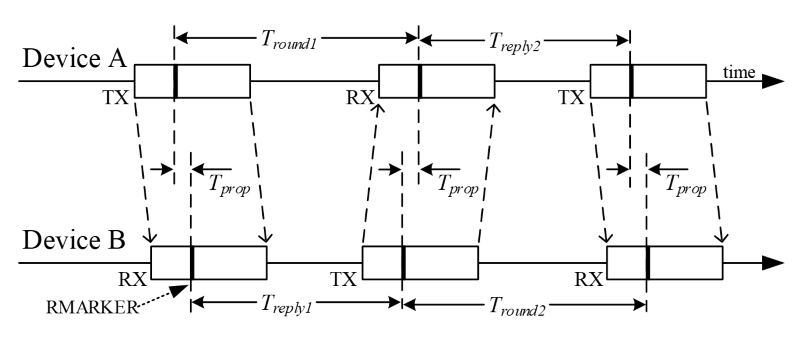GNSS (Global Navigation Satellite System) solutions like GPS or Beidou offers outdoor positioning with an accuracy of about 2-in-3 meters in optimal conditions for consumer devices, and starting in 2022, the upcoming GPS III will bring that down to as low as 1 meter again in consumer devices. For that only works for outdoor positioning, and for indoor positioning we’ve already covered WiFi RTT, and Bluetooth proximity beacons.
The latter has been around for a while, but does not really provide accurate indoor positioning since they’d usually report the distance with less than 10 meters accuracy, and the lag is fairly large with 3 to 6 seconds needed to estimate the distance. The recently released Bluetooth 5.1 specification addresses this issue by enabling location services accurate to within 10 centimeters thanks to a new direction-finding capability made possible with an antenna array.

However, as pointed out by EETAsia, there’s another standard that promises one centimeter accuracy, and nanoseconds resolution times: IEEE 802.15.4z.
The standard is described as follows on IEEE802 website:
The IEEE 802.15.4z Enhanced Impulse Radio(EiR) Task Group is defining a series of PHY enhancements to improve the capabilities of UWB devices using the LRP and HRP PHY clauses. MAC changes to support the PHY changes are also being made. Specifically, this amendment enhances the HRP and LRP UWB PHYs and associated ranging techniques. Areas of enhancement include additional coding and preamble options, improvements to existing modulations to increase the integrity and accuracy of the ranging measurements, and additional information element definitions to facilitate ranging information exchange. The amendment defines MAC changes to support these PHY enhancements. Typical range of the radio is up to 100 meters.
While 802.15.4z is a superior standard to the positioning capabilities of Bluetooth 5.1, I understand the latter does not require a new radio, just the addition of an antenna array, so it does not require new silicon, and will be brought to smartphones faster.
The IEEE 802.15.4z standard for UWB should be in a stable draft form in mid-March 2019, so silicon designs may start around that time, and since companies like Samsung, Huawei, and Apple are involved in the 802.15.4z task group we may expect the new standard to be found in smartphones in the next couple of years. Silicon vendors involved include NXP, 3db access and Decawave all of three already providing UWB (Ultra Wide Band) chips.

Jean-Luc started CNX Software in 2010 as a part-time endeavor, before quitting his job as a software engineering manager, and starting to write daily news, and reviews full time later in 2011.
Support CNX Software! Donate via cryptocurrencies, become a Patron on Patreon, or purchase goods on Amazon or Aliexpress




